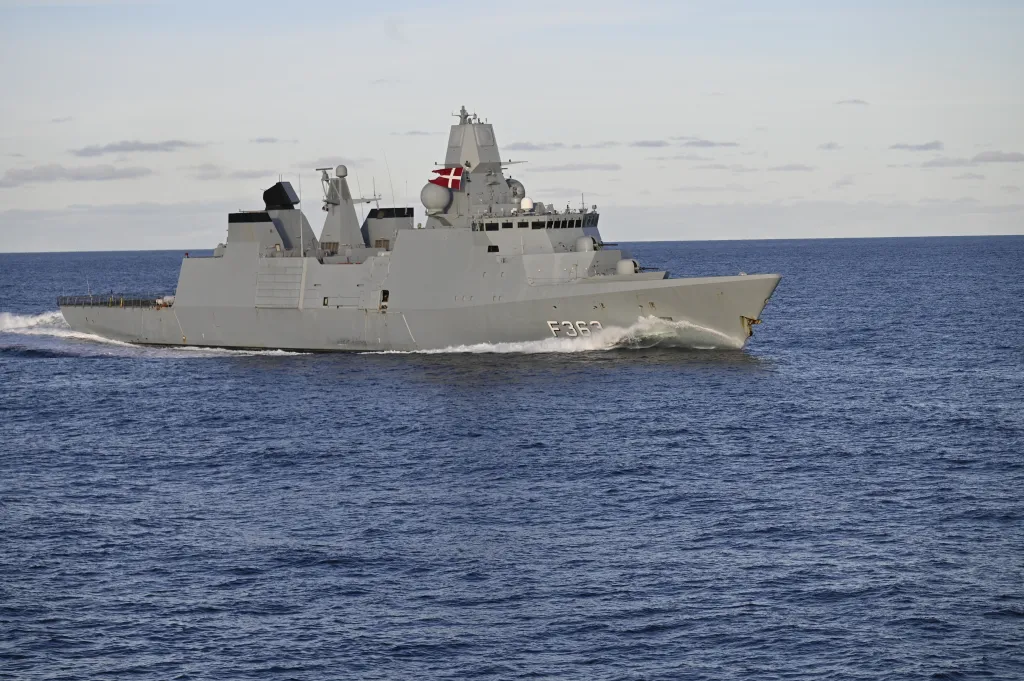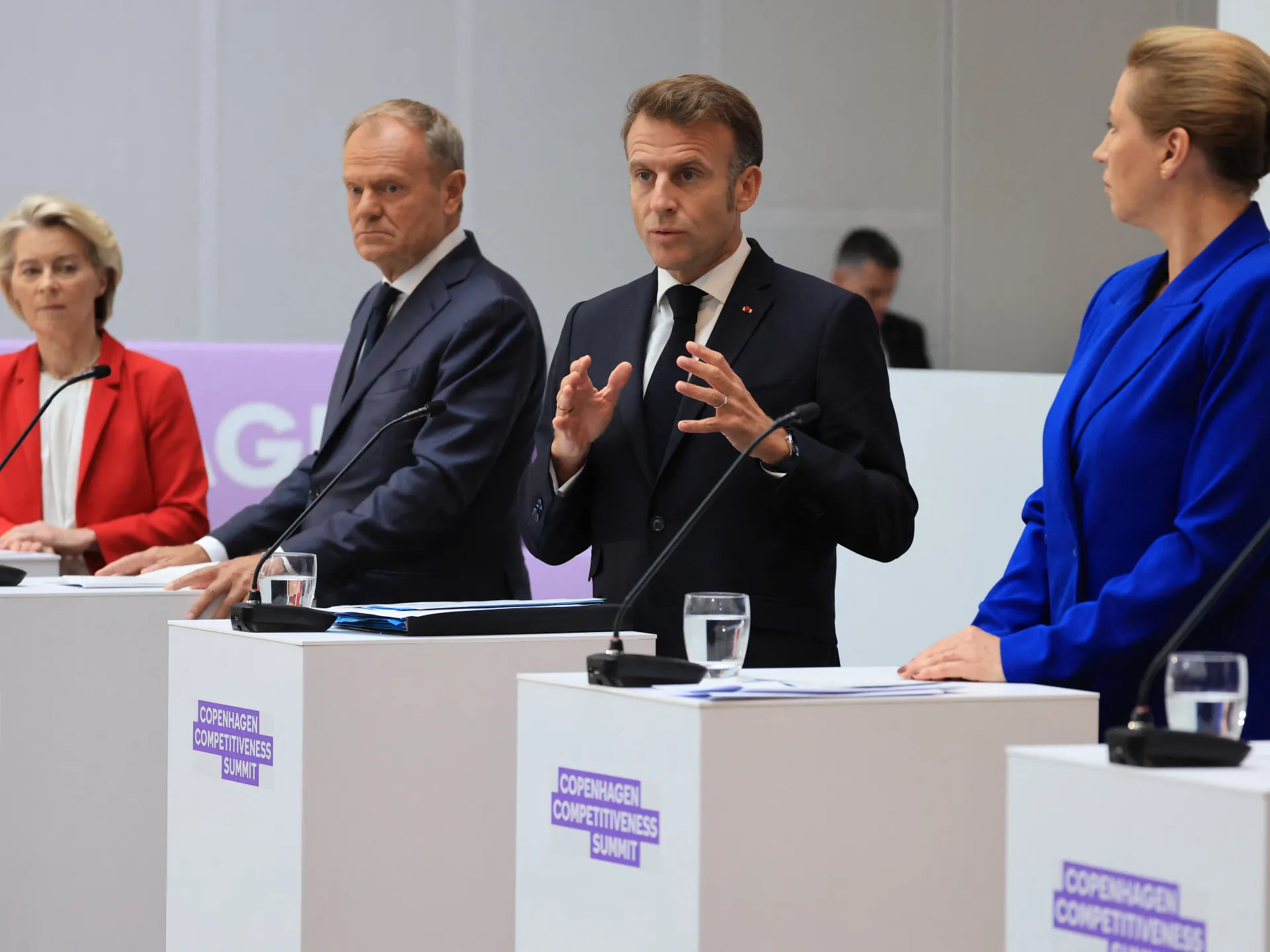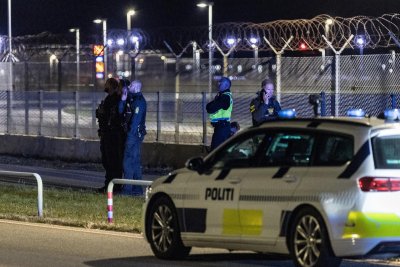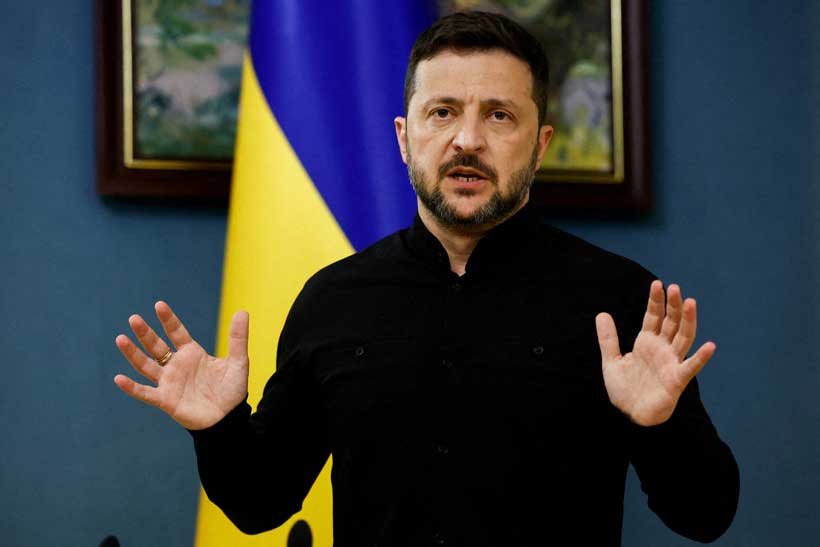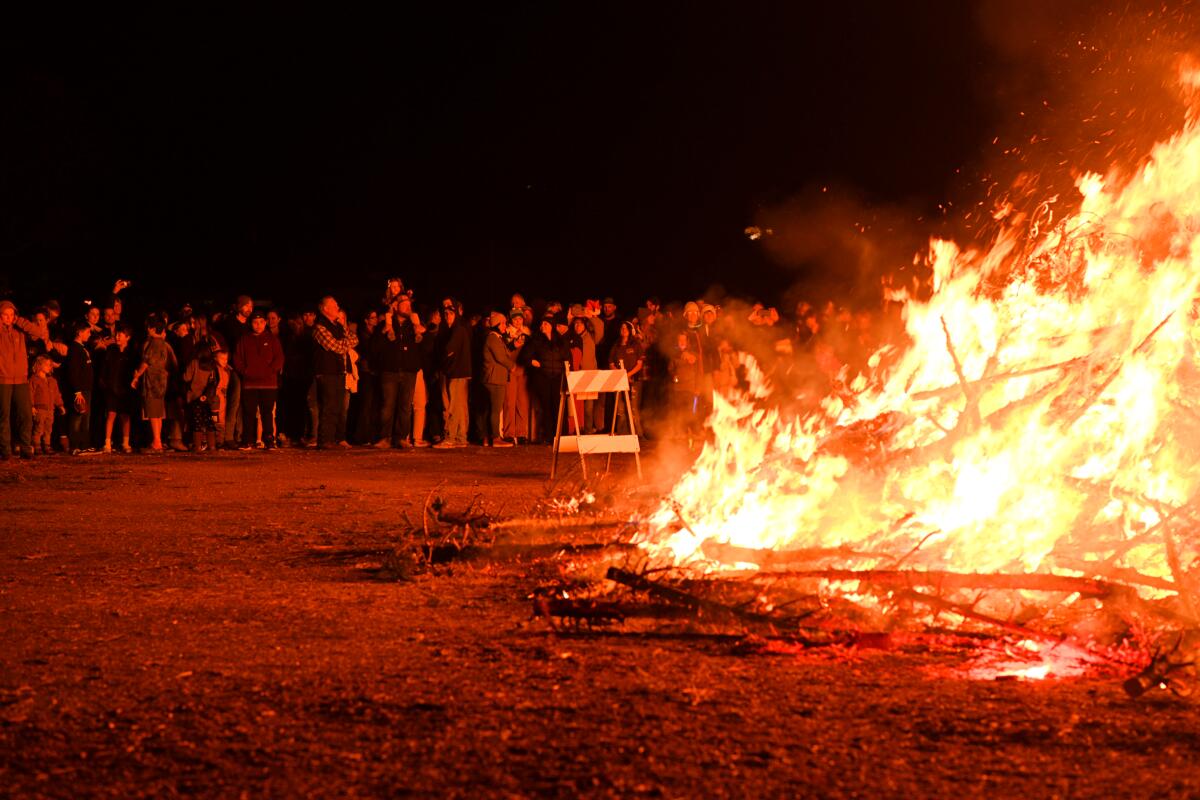Russia’s Hybrid War Against NATO Ramping Up: Danish Intelligence
While Danish intelligence does not see an immediate threat of a kinetic war, it claims Russia’s growing belligerence has included repeatedly threatening its warships and helicopters in Danish waters. These details are part of a new Danish intelligence threat assessment released Friday that concludes Russia is in a state of increasingly intense “hybrid war” with NATO. That is just below the threshold of armed conflict and comes at a time of mounting tensions between Moscow and the alliance.
“We have seen several incidents in the Danish straits, where Danish air force helicopters and naval vessels have been targeted by tracking radars and physically pointed at with weapons from Russian warships,” Danish Defense Intelligence Service (DDIS) Director Thomas Ahrenkiel stated at a press conference on Friday.

Russian warships had sailed on collision courses with Danish vessels during their passage through the straits, Ahrenkiel added. In addition, “a Russian warship has been anchored in Danish waters for over a week,” Reuters reported from the press conference. That suggested “possible interference from Moscow if Denmark tried to curb movements of Russia’s ‘shadow fleet’ of tankers used to circumvent Western sanctions on its oil exports imposed over its war with Ukraine.”
“Russia is using military force to try to intimidate Denmark and force it to abandon compliance with shipping rules in the Baltic Sea,” the Danish intelligence chief warned.
“Russia highly likely sees itself as being in conflict with the West, in which the hybrid means employed are kept below the threshold of armed conflict,” the report notes. “The DDIS assesses that Russia is currently conducting hybrid warfare against NATO and the West. It is highly likely that the hybrid threat from Russia against NATO will increase in the coming years.”
As examples, in addition to the aforementioned threats against its naval assets, Danish intelligence said that Russia “has deployed fighter jets to protect its shadow fleet as it carries Russian oil out of the Baltic Sea and has violated the airspace of NATO states with, for instance, fighter jets, helicopters and attack drones.”
“The states that have been most affected by Russian airspace violations in recent months are Poland, Estonia, Finland, and Romania,” the report adds.
Russia’s hybrid war with NATO countries goes far beyond these measures, with accusations of cyber attacks, clandestine sabotage operations, widespread GPS jamming and much more.
“Since the spring of 2025, Russia’s aggressive military behavior towards NATO countries has further intensified,” according to the assessment.
The purpose of this “aggressive military behavior” is to test “NATO members’ response capabilities and [cause] concern among member states that NATO is headed towards war with Russia.”
In addition, Danish intelligence states that the threat of continued Russian military provocations and cyber attacks against NATO is classified as “high,” meaning “there are one or more actors that have the capacity for and are specifically planning attacks/harmful activity or that have already carried out or attempted attacks/harmful activity.”
Despite all this, Danish intelligence states that for now, the threat of open warfare with Russia is classified as “none,” meaning “there are no signs of a threat. There are no actors with both the capacity and intention for attacks/harmful activity.”

Meanwhile, European officials are investigating whether the ongoing wave of reported mystery drone sightings over military installations and airports is part of the Russian hybrid warfare efforts Danish intelligence is warning about.
The latest reported incident took place over the Elsenborn military base in the East Cantons section of Belgium, on the border with Germany.
“A Belgian test aircraft designed to detect drones sighted a total of 15,” the Belgian VRT news outlet reported on Friday. “Drones were observed at various altitudes on both the Belgian and German sides of the base. Where the drones came from and who operated them is not yet clear. The Ministry of Defence is investigating the incident.”
We’ve reached out to the Belgian MoD for more details about this incident.
The night before, the Munich Airport was shut down for several hours after drones were spotted nearby, forcing the grounding of 17 flights and the diversion to other airports of another 15, Munich Airport officials explained. The airport resumed flights early Friday morning.
Before these latest incidents, several airports in Denmark and Norway were closed after drones were spotted, which leaders in Denmark characterized as an effort to sow fear in the country.
Concern about these incursions has been so high that a German Navy frigate and counter-drone equipment from several nations were rushed to Copenhagen to protect the skies during a meeting of European Union leaders.

In addition, the Arleigh Burke class guided missile destroyer USS Bulkeley was deployed to the NATO Baltic Sentry operation, which has expanded from protecting critical undersea infrastructure to now defending against drones. It marks the first contribution of a U.S. Navy warship to that effort.

The recent Russian drone incursions into Poland and Romania and violations of Estonian airspace by three MiG-31 Foxhound interceptors have raised suspicions that Russia, which denies involvement, is behind this drone wave. However, there is no conclusive evidence, several European officials state.
“It’s possible,” that there is a Russian connection to the drone incursions, “but there are currently no concrete indications,” Belgian Defense Minister Theo Francken said. “That needs to be investigated. Personally, I think these drones are very often an example of a hybrid threat. This is a way to sow unrest. That has been Russia’s pattern for many years.”
Amid the accusations and suspicions, Russian President Vladimir Putin joked about drone incursions.
“Oh, you know, I think we’ve had enough fun with drones for now,” he joshed. “’I won’t do it anymore. I won’t go to France, Denmark or Copenhagen anymore. Where else do they fly?”
As we have explained in the past, it is quite possible that many, if not most of these sightings are mistaken identity. It is a pattern that emerged last year when thousands of people claimed to see drones in the New Jersey region of the U.S. The overwhelming majority of those sightings were airplanes, planets and other benign objects in the sky.
Still, just like in the New Jersey case, we do know that a limited number of the sightings over military bases were confirmed by the government. The reality is that these drone incursions over critical facilities in Europe have been happening for years, but just how much it has exploded in recent weeks is blurred by media reports and sightings not supported by independent analysis or corroborated by sensor data.
Regardless, the drone incursion reports have rattled Europe, especially given that some had to be shot down amid an ongoing brutal war in Ukraine that is spilling over borders more frequently. That this comes as European officials are accusing Moscow of engaging in hybrid warfare speaks to the importance of finding the source of these objects.
Contact the author: [email protected]
